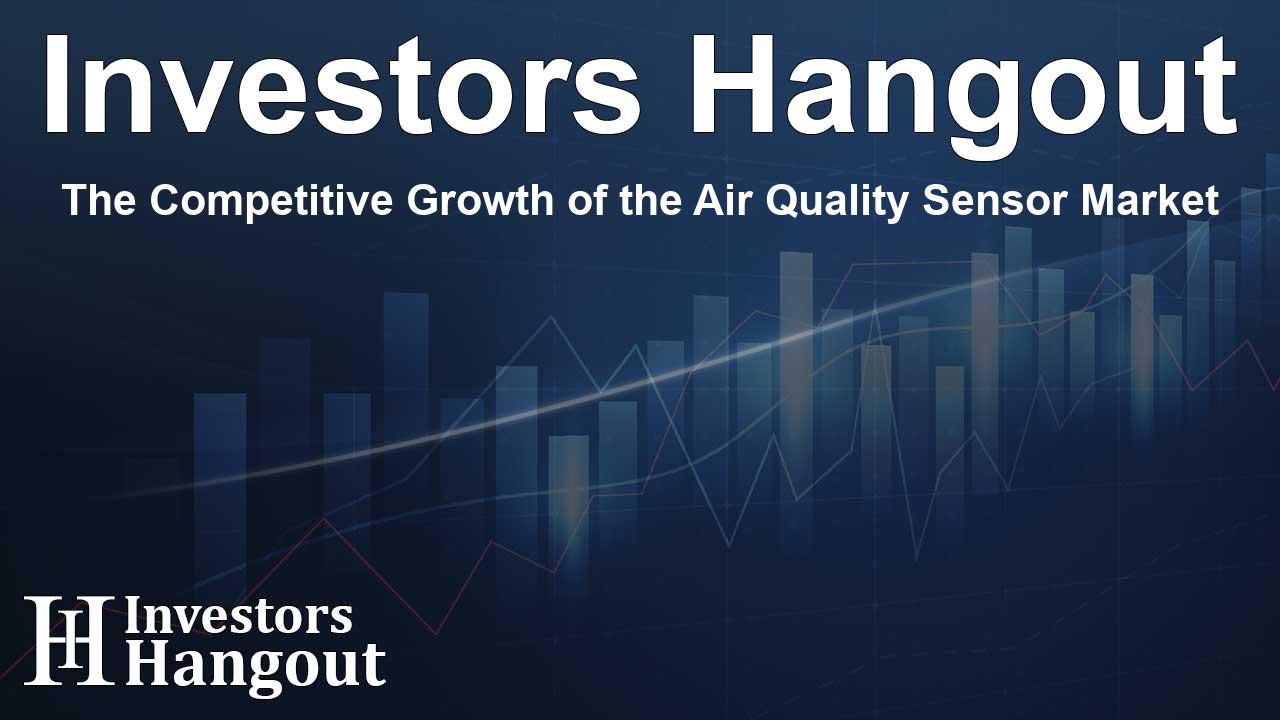The Competitive Growth of the Air Quality Sensor Market

Strong Growth Trends in the Air Quality Sensor Market
The air quality sensor market is on an impressive trajectory, spurred by an increasing awareness of the adverse effects air pollution has on health. Governments worldwide are implementing more stringent regulations to curb emissions, further fueling market growth.
Market Valuation and Projections
The current valuation of the air quality sensor market stands at approximately $5.7 billion and is anticipated to flourish, reaching around $12.4 billion within a decade. The growth rate is projected to be a robust 8.3% CAGR, driven by various contributing factors.
Key Factors Propelling Market Growth
Several significant aspects contribute to the expansion of the air quality sensor market. One primary element is the heightened awareness surrounding the health risks caused by poor air quality, which boosts the demand for effective monitoring solutions. Another vital aspect is the regulatory environment; governments are pushing for enhanced air quality standards that necessitate reliable monitoring systems.
The Role of Technological Advancements
Technological improvements play a crucial role in increasing the efficiency and accessibility of air quality sensors. Miniaturized sensors and real-time monitoring capabilities have made it easier for consumers and businesses to monitor air quality effectively. The integration of IoT and AI technologies into monitoring systems is creating even more opportunities for innovation in the field.
Market Segmentation Overview
The market showcases diverse segments based on various criteria. Gas sensors have emerged as a leading segment thanks to their capability to detect harmful gases such as carbon monoxide and nitrogen dioxide. These sensors find applications across various industries, including automotive, healthcare, and environmental monitoring, establishing their dominance.
Industry Vertical Contributions
Focusing on industry applications, the commercial sector has shown a significant demand for air quality monitoring. Businesses are increasingly prioritizing a healthy indoor environment for their occupants, driving the demand for these sensors. Adherence to strict indoor air quality regulations has also pushed commercial establishments to invest in these technologies.
Regional Insights and Trends
The Asia-Pacific region holds a prominent position in the air quality sensor market due to rapid urbanization and industrialization. Countries pursuing smart city initiatives are integrating air quality monitoring solutions as part of their urban planning, prompting significant investments in related technologies. The public awareness surrounding the dangers associated with poor air quality continues to grow, influencing demand in this lucrative market.
Leading Players in the Market
Several key players are contributing strategically to the growth of the air quality sensor market. Companies are adopting various strategies, including new product launches and collaborations, to strengthen their market presence. This competition fosters innovation and drives the industry toward more efficient and advanced monitoring solutions.
Promoting Awareness and Advancements
As health concerns rise, public awareness campaigns about the importance of monitoring air quality are becoming more prevalent. This trend encourages investments into air quality sensors, further propelling market employees and promoting innovative advancements in technology.
Frequently Asked Questions
What are the primary factors driving the air quality sensor market?
The primary factors include rising health concerns about air pollution, stringent government regulations, rapid urbanization, and advancements in sensor technology.
Which segment leads the air quality sensor market?
The gas sensor segment currently leads the market, thanks to its ability to detect various harmful gases efficiently.
How has the COVID-19 pandemic affected the air quality sensor market?
The pandemic heightened awareness about indoor air quality, resulting in increased demand for air quality sensors in residential and commercial buildings.
What role do smart cities play in the air quality sensor market?
Smart city initiatives incorporate air quality monitoring systems, driving investments and adoption of these technologies across urban infrastructures.
Who are the key players in the air quality sensor market?
Key players include Honeywell Analytics, Siemens AG, Figaro Engineering Inc, and Airthings AS, among others, who focus on product innovation and strategic collaborations.
About The Author
Contact Dylan Bailey privately here. Or send an email with ATTN: Dylan Bailey as the subject to contact@investorshangout.com.
About Investors Hangout
Investors Hangout is a leading online stock forum for financial discussion and learning, offering a wide range of free tools and resources. It draws in traders of all levels, who exchange market knowledge, investigate trading tactics, and keep an eye on industry developments in real time. Featuring financial articles, stock message boards, quotes, charts, company profiles, and live news updates. Through cooperative learning and a wealth of informational resources, it helps users from novices creating their first portfolios to experts honing their techniques. Join Investors Hangout today: https://investorshangout.com/
The content of this article is based on factual, publicly available information and does not represent legal, financial, or investment advice. Investors Hangout does not offer financial advice, and the author is not a licensed financial advisor. Consult a qualified advisor before making any financial or investment decisions based on this article. This article should not be considered advice to purchase, sell, or hold any securities or other investments. If any of the material provided here is inaccurate, please contact us for corrections.
